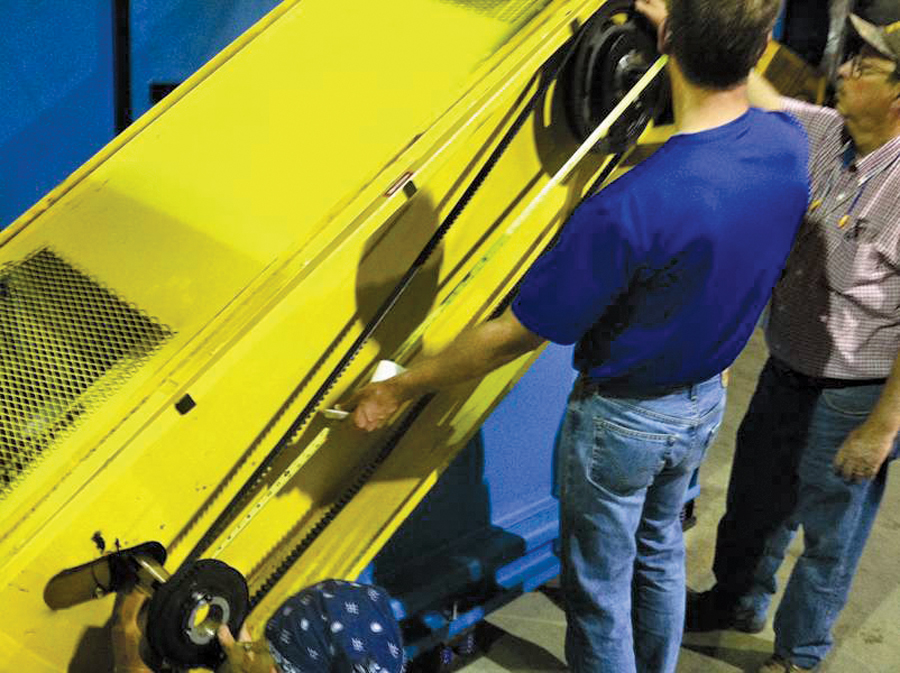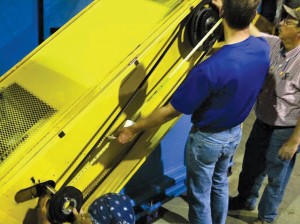
Using synchronous belts for air-handling
Replacing V-belts with synchronous belts in air-handling applications has been recognized by the US Department of Energy as a best practice to reduce energy requirements in industrial and commercial applications.
June 1, 2013 | By MRO Magazine
 Photo: Jason Industrial Inc. Electrical savings due to the consistent 98% efficiency standard of a synchronous belt are significant in many applications.
Photo: Jason Industrial Inc. Electrical savings due to the consistent 98% efficiency standard of a synchronous belt are significant in many applications. 
Photo: Jason Industrial Inc. Electrical savings due to the consistent 98% efficiency standard of a synchronous belt are significant in many applications.
Replacing V-belts with synchronous belts in air-handling applications has been recognized by the US Department of Energy as a best practice to reduce energy requirements in industrial and commercial applications.
At the time of installation, V-belt drives run at 95-98% efficiency, but the efficiency rating drops to about 93% over the life of the belt — if it is properly maintained. Most efficiency losses occur in the first 24 hours of operation, creating the need to re-tension the belt. If V-belt drives are not re-tensioned and maintained, their efficiency can drop as to as low as 80% during the belt’s life.
Efficiency as applied to air-handling equipment is the rate that the motor’s energy is transferred to the driven fan. The lower the efficiency rating, the slower the fan speed, which results in lower air movement and longer cycle/run times for the HVAC equipment, thus increasing electrical consumption.
Once they are properly tensioned, synchronous belts maintain a 98% efficiency rating throughout their life, without the need for costly maintenance. Electrical savings due to the consistent 98% efficiency standard of a synchronous belt are significant in many applications.
What is the annual energy and dollar savings if a 93% efficient V-belt is replaced with a 98% efficient synchronous belt? The Department of Energy report compares a continuously operating 100-hp supply-air fan motor at 93% efficiency, which operates at an average load of 75%, while consuming 527,000 kWh annually. Electricity is priced at $0.05/KWh. Energy Savings = Annual Energy Use x (1-93%/98%) = 527,000 KWh/year x (1-93/98) = 26,888 kWh/year. Annual Cost savings = 26,888 kWh x $0.05 = $1,345.
Note that synchronous belts will not produce energy savings in every application. Smaller drive applications with short centre distances tend to use the V-belt slippage to ramp up fan speed. Switching to synchronous in these applications can possibly increase electrical consumption. Consult a belt supplier for help with calculating the savings potential for your specific drive design. MRO
This article was prepared by Jason Industrial Inc. staff in Mississauga, ON.
Online Reader Inquiry No. 505
